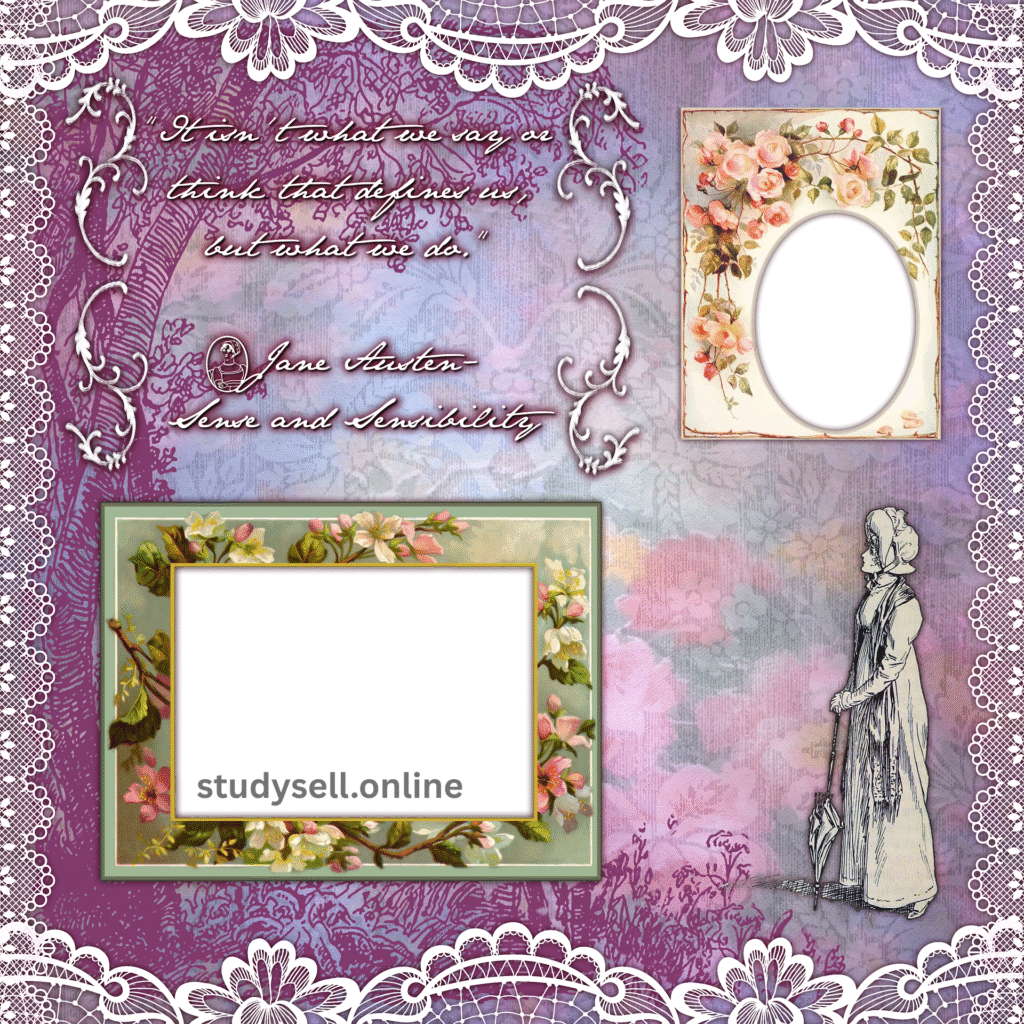Introduction to Jane Austen’s Literary Legacy
Jane Austen, among the most renowned writers in English literature, wrote novels that still enthrall readers globally. Her novels, which are written against the backdrop of the Regency period, examine love, social status, family, and self-improvement with biting wit and insightful social observation. Austen’s novels are evergreen, capturing the imagination of casual readers as well as scholars of literature. This blog explores the universe of Jane Austen novels, identifying her key novels, their subject matter, and the reasons why they remain universally appealing to contemporary readers.

Who Was Jane Austen?
Born in 1775 in England, Hampshire, Jane Austen authored six major novels before her death in 1817. In spite of her relatively brief life, her sharp insights into human nature and society made her a literary legend. Her novels, which frequently revolve around the lives of women living in the English gentry, are tinged with romance, satire, and social commentary. Austen’s skill at crafting likable characters and interesting plots has made her novels bookshelf staples in classic literature.
Overview of Jane Austen’s Major Novels
Jane Austen wrote six major novels: Sense and Sensibility (1811), Pride and Prejudice (1813), Mansfield Park (1814), Emma (1815), Northanger Abbey (published posthumously in 1818), and Persuasion (published posthumously in 1818). Each book gives a different take on love, marriage, and social pressure, all swathed in Austen’s irrepressible wit. Here, we look at each book and why it continues to captivate.
1. Pride and Prejudice
Austen’s most popular and enduring novel, Pride and Prejudice traces the path of Elizabeth Bennet, a smart and lively young woman, as she navigates the expectations of society and her own growing relationship with the rich but at first reserved Mr. Darcy. The novel’s examination of pride, prejudice, and individual development speaks to readers of any age. Its legendary beginning sentence, “It is a truth universally acknowledged…,” establishes the tone for a humorous and romantic tale with strong social commentary.
Why It’s Popular: The romance between Elizabeth and Darcy, combined with Austen’s criticism of class and gender roles, has made this novel a consistent bestseller. It is a must-read for those who enjoy Jane Austen novels.
2. Sense and Sensibility
Austen’s initial published novel, Sense and Sensibility, compares the two sisters’ personalities, Elinor and Marianne Dashwood. Elinor personifies sense, while Marianne exhibits sensibility (emotion). The novel follows their romantic endeavors and societal pressures as women with few financial opportunities.
Why It’s Admired: The relationships between the sisters and their love lives demonstrate Austen’s skill at creating multifaceted characters. The book’s theme of the importance of balance between logic and feeling is still pertinent today.
3. Emma
Emma focuses on Emma Woodhouse, a wealthy, bright, but somewhat self-centered young lady who believes she is a matchmaker. Her mistakes and subsequent self-realization propel the story, combining humor and character development.
Why It’s Loved: The imperfect yet lovable heroine of Emma and the light humor of the novel render it a pleasure to read. It stands out among the Jane Austen novels due to its humorous approach to matchmaking and finding one’s self.
4. Mansfield Park
Mansfield Park traces the story of Fanny Price, who is timid and morally upright young woman brought up by her rich relatives at Mansfield Park. The novel touches on issues of ethics, social class, and complexities surrounding the family.
Why It’s Loved: Fanny’s quiet strength and the novel’s deeper exploration of morality set it apart from Austen’s more romantic works. It’s a thought-provoking addition to her oeuvre.
5. Persuasion
Published after her death, Persuasion is the tale of Anne Elliot, a lady who receives a second chance at love with Captain Wentworth after having spurned him years before under pressure from society. The novel is usually thought to be Austen’s most mature novel, with a contemplative tone and sophisticated characters.
Why It’s Beloved: Persuasion‘s emotional resonance resonates with readers who desire a more introspective Austen. Regret, second chances, and self-discovery make it an emotionally rich read.
6. Northanger Abbey
Likewise published after Austen’s death, Northanger Abbey is a satirical comedy about the Gothic novel phenomenon of Austen’s era. Catherine Morland, a naive heroine, has an overactive imagination that makes her perceive mystery and intrigue where there is none.
Why It’s Popular: The lighthearted tone of the novel and Austen’s humor at the expense of Gothic literature make it a standout in her list. It’s a light, entertaining read for people who love Jane Austen novels.
Themes in Jane Austen’s Novels
Jane Austen novels are famous for dealing with universal themes, such as:
-
Love and Marriage: Austen’s works frequently revolve around the social and individual dynamics of courtship. Her heroines deal with love while wrestling with material security and societal expectations.
-
Social Class: Austen satirizes the strict class system of England during the Regency period, bringing to light the limitations it imposes upon individuals, and particularly women.
-
Gender Roles: Her female characters frequently subvert societal norms, demonstrating intelligence, wit, and agency in a patriarchal society.
-
Morality and Personal Development: Austen’s heroes make mistakes, but they learn from them and become more self-aware and empathetic.
These themes, coupled with Austen’s wicked dialogue and realizable characters, make her novels timeless, even in the 21st century.
Why Jane Austen Novels Endure
Jane Austen novels have stood the test of time because of their universal themes and compelling narratives. Here are some reasons why her novels remain popular:
-
Relatable Characters: From Elizabeth Bennet’s passionate independence to Anne Elliot’s subtle strength, Austen’s characters are such ordinary people with ordinary flaws and dreams.
-
Timeless Themes: Love, family, and personal development are all experiences shared across generations.
-
Adaptability: Austen novels have been reimagined in thousands of movies, television shows, and contemporary reworks, bringing her work to new generations. For instance, the 1995 BBC version of Pride and Prejudice and the 2005 film featuring Keira Knightley are still popular cultural references.
-
Literary Craftsmanship: Austen’s humor, irony, and economical writing style make her books a pleasure to read for enjoyment or scholarly study.
How to Start Reading Jane Austen Books
If you’re new to Jane Austen books, here’s a suggested reading order based on accessibility and popularity:
-
Start with Pride and Prejudice: Its engaging plot and iconic romance make it an ideal introduction.
-
Move to Sense and Sensibility: This novel offers a great balance of romance and family dynamics.
-
Try Emma: Its humor and lighter tone make it a fun follow-up.
-
Explore Persuasion: For a more mature and reflective story.
-
Immerse yourself in Mansfield Park: For a closer examination of morals and social ills.
-
Complete with Northanger Abbey: For a lighthearted, satirical view of the Gothic novel.
Conclusion
Jane Austen’s novels are not simply Regency romances; they are thoughtful examinations of human nature, society, and personal development. From the spirited Elizabeth Bennet to the introspective Anne Elliot, Austen’s characters continue to inspire and entertain readers worldwide. Whether you’re a longtime fan or a newcomer, diving into Jane Austen books is a rewarding journey through love, wit, and timeless storytelling. Pick up one of her novels today and discover why her work remains a cornerstone of classic literature.
